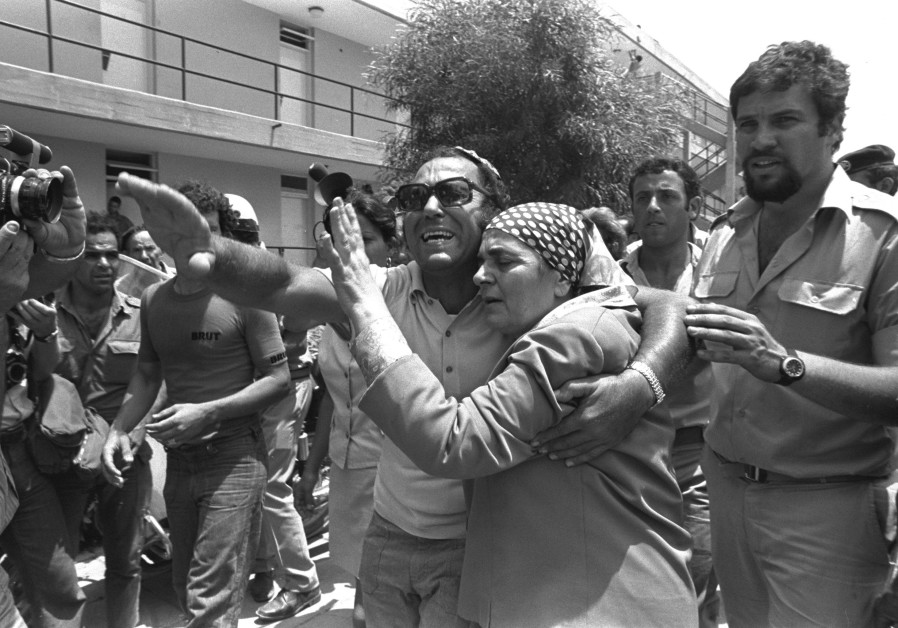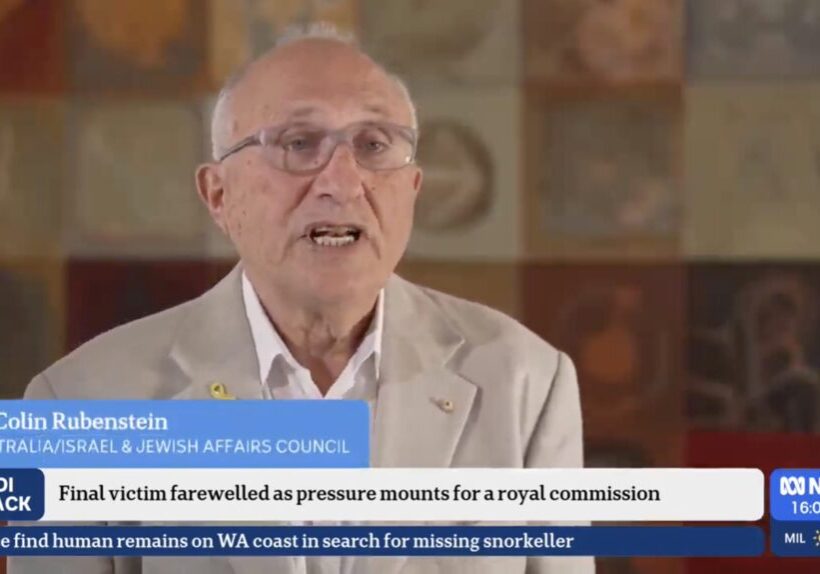Australia/Israel Review
Essay: Who were the Entebbe hijackers?
Sep 9, 2020 | Jonathan Spyer

How German leftists became antisemitic terrorists
The Entebbe raid of July 4, 1976 is remembered as a high point of counter-terror warfare in general, and of the Israeli contribution to that field in particular. The raid involved astonishing audacity, precise and pinpoint intelligence, great courage and professional military skills of the highest order. It remains a subject of study at military institutes across the world.
Less attention has been paid to the precise nature of the enemy that the IDF’s Sayeret Matkal commandos and other forces confronted that night at the Ugandan airport.
The force that carried out the hijacking of Air France Flight 139 en route from Tel Aviv to Paris on June 27, 1976 represented the sharpened edge of an intricate structure. Included within this nexus were major Palestinian militant groups, German radical leftist organisations and, behind them, the logistical and material support of the USSR and a number of allied Arab states.
The terrorist team that carried out the hijacking was officially aligned with an organisation calling itself the Popular Front for the Liberation of Palestine – External Operations (PFLP-EO). This lengthy set of initials obscures as much as it reveals.
The four-person team consisted of two Palestinian Arab men and, famously, two Germans, a man and a woman. The Palestinians, Jayel al-Arja and Fayez Abdul-Rahim al Jaber, were senior PFLP operatives. The Germans, Wilfried Bose and Brigitte Kuhlmann, were members of a far-Left paramilitary network in Germany known as the Revolutionary Cells.
The four were joined by six more PFLP operatives on the ground at Entebbe. The four hijackers and three of the six who joined them on the ground were killed on the night of July 4.

Entebbe Airport, 1976
The presence of two Germans among the hijackers killed by the IDF in Operation Thunderbolt at Entebbe Airport is one of the best-known elements of this entire episode. The background to how these individuals – a bookshop owner and a former educator, residents of Frankfurt am Main – came to be present at the airport is less familiar.
Delving into the organisational background and the biographies of the Entebbe hijackers offers a fascinating window on the tortured politics of post-war Europe and of the Cold War, the nascent Palestinian national movement and perhaps also the unresolved pathologies of Germany towards the Jews.
The PFLP-EO
The PFLP-EO, led by Dr. Wadie Haddad, is sometimes described as an “offshoot” or “splinter” from the more well-known Popular Front for the Liberation of Palestine (PFLP). Haddad, a Palestinian Christian born in Safed in 1927, was a close associate of PFLP founder George Habash. Both were medical doctors and graduates of the American University of Beirut. When Habash founded the PFLP following the Six Day War in 1967, Haddad became the leader of its military wing. In the subsequent years, he led a number of high-profile attacks on Israeli and Jordanian targets, including the Dawsons’ Field hijackings of September 1970, and the hijacking of an El Al plane in 1968.
A number of accounts sympathetic to the PFLP claim that at some point in the early 1970s, Wadie Haddad was expelled from the organisation and then continued to operate in the field of international terrorism, using the name PFLP-EO.
The motives for this claim are fairly obvious. The PFLP was and remains an integral part of the PLO. The PLO in turn was and is engaged in international diplomacy and formal political activity. Open association with an organisation that engaged in the deliberate targeting of civilians and civil aviation, the singling out of Jews as victims and association with antisemitic German terrorists would not be conducive to success in these endeavours.
No proof has ever been presented for the supposed “expulsion” of Wadie Haddad from the PFLP. Rather, all evidence suggests that the PFLP-EO was a conveniently deniable front for the PFLP itself.
When Haddad died in 1978 (reportedly as a result of a poisoning by Israel’s Mossad) he was afforded a grand funeral by the PFLP in Baghdad in April of that year. No mention was made of any split or division in the movement. The organisation’s spokesman, Bassam Abu Sharif, eulogised Haddad as a “founding member” of the PFLP. He described Haddad as having “direct responsibility of the special operations branch in the PFLP. He was the leader of the special operations against the enemy.”
Documents of the USSR’s Committee of State Security, better known as the KGB, secretly translated from the KGB archive by Soviet dissident Vladimir Bukovsky in 1992, further support the contention that any distinction between the PFLP and Haddad’s organisation is bogus.
In a document dated April 23, 1974, then-KGB head Yuri Andropov describes Haddad as “Politburo member of the Popular Front for the Liberation of Palestine (PFLP), head of the PFLP’s external operations section.” The document is concerned with Haddad’s request for assistance for the PFLP from the USSR for its external operations, and recommends a positive response.
Further documents in the archive indicate that this assistance was forthcoming. They also describe Haddad as himself an agent of the Soviet intelligence organisation: “KGB intelligence agent W. Haddad, head of the external operations section of the People’s Liberation Front of Palestine, received a consignment of foreign-produced arms and ammunition (53 submachine guns, 50 handguns including 10 fitted with silencers, 34,000 rounds of ammunition).”
So the first and important element to understand regarding the hijacking of Flight 139 is that it was undertaken by the PFLP, which was and remains an integral part of the PLO. The second point to note is that at the time of the hijacking, the PFLP was the recipient of aid and assistance from the Soviet Union.
The Revolutionary Cells
The KGB documents cited above note that weaponry intended for the PFLP was delivered to the Gulf of Aden. This area was in the territorial waters of the Peoples’ Democratic Republic of Yemen. South Yemen was a Soviet-aligned Arab state. It was the hub for the USSR’s covert activity in the Arab world.
Among the activities taking place on the soil of South Yemen were military training programs for militants from a variety of organisations set to take part in terror and paramilitary operations as part of the Soviet-financed, Palestinian-managed international network. Among the individuals who graduated from such a training program at some time in 1974-1975 were two young German supporters of the Palestinian cause – Wilfried Bose and Brigitte Kuhlmann.
How did these two young German leftist radicals find their way to an international terror nexus supported by Soviet money and logistics? It is a long way from the bookshops and cafes of Frankfurt am Main to the training camps of South Yemen, and then to the airport terminal at Entebbe.
Bose and Kuhlmann were founding members of a violent German leftist radical organisation called the Revolutionaere Zellen, or Revolutionary Cells (RZ). This group was one of three armed organisations to emerge from the remnants of the German New Left in the early 1970s. The other two were the better-known Red Army Faction (or “Baader-Meinhof group”) and the anarchist June 2 movement.
The Revolutionary Cells differed somewhat from the other two groups in that they did not seek to create a full-time underground cadre of committed activists. Rather, the RZ employed a loosely organised cell structure in which members continued with their regular lives, while at the same time participating in the activities of the group.
This led to them being described derisively by both the German police and their fellow leftists as “weekend revolutionaries.” The loose and decentralised nature of the movement, however, served it well in avoiding detection and dismantling by the authorities.
Bose, who was a friend of notorious Venezuelan terrorist Ilich Ramirez Sanchez (“Carlos the Jackal”), was a well-known figure in Frankfurt’s left-wing scene. He was the co-founder of the “Roter Stern” (Red Star) publishing house, which maintained an office and bookshop at Holzhausen Strasse in the city.
Kuhlmann, who was Bose’s girlfriend, lived at a communal house maintained by Roter Stern at its offices and worked for the publishing house while studying part-time at Frankfurt University.
But despite the part-time nature and bohemian trappings of these young radicals, the Revolutionary Cells were not merely poseurs. From the outset, Bose, Kuhlmann and the others made themselves available to Palestinian terror groups for assistance with infrastructure and logistics on German soil.
On this basis, according to Prof. Jeffrey Herf in his book Undeclared Wars with Israel, quoting from the testimony of Hans Joachim Klein, a later defector from the group, the Revolutionary Cells offered accommodation and logistical help to the Black September organisation (Fatah’s deniable equivalent to the PFLP-EO) during the attack on the Israeli delegation to the Munich Olympics in 1972.
Bose’s group directly targeted Israeli targets in Germany. They attacked an Israeli travel bureau in Frankfurt on August 26, 1974. On February 8, 1976, they bombed the offices of Israel Bonds in Berlin.
The Revolutionary Cells also openly targeted Jewish community figures in Germany. In this, they were following a pattern of practical indifference toward that supposed distinction between antisemitism and anti-Zionism, which was their official stance. According to the testimony of Hans-Joachim Klein, the Revolutionary Cells had placed Heinz Galinski and Ignatz Lipinski, Jewish community leaders in Berlin and Frankfurt respectively, on a list of individuals to be assassinated. Even Nazi hunter Simon Wiesenthal, according to Klein, was proposed by Wilfried Bose as a target for murder.
The Revolutionary Cells benefited from direct financial assistance from the PFLP at this time. According to Klein, Wadie Haddad paid 3,000 Deutschmarks per month to each member in West Germany.
A number of other countries – Italy, the US, France, Holland and the UK among them – witnessed the emergence of small armed groups from among the ranks of supporters of the New Left. All of these groups were pro-Palestinian. All supported Palestinian terror. None of them targeted institutions of the Jewish community (or indeed of Israel) with a similar level of focus and intensity as their German comrades.
The Road to Entebbe

Family members reunite at Ben Gurion Airport after the Entebbe rescue
The hijacking of Air France Flight 139 was thus the work of a network that brought together Soviet weapons and logistical assistance, Palestinian nationalist organisations, Arab states aligned with the USSR, and young Europeans motivated by a mixture of professed leftist radicalism and barely concealed hostility to Jews.
The conduct of both Wilfried Bose and, according to witness testimonies, in particular Brigitte Kuhlmann during the course of the hijacking was in line with the orientation described above. Kuhlmann, the former educator from Hanover who volunteered with mentally handicapped children in her spare time, was universally remembered for her particular cruelty and fury throughout the course of the hijacking.
The hijacking famously included a separation of Israeli and Jewish hostages from non-Israeli and non-Jewish passengers.
In this regard, it is worth noting recent claims that this selection included only Israeli Jews. Such claims are false. It is beyond dispute that at least 10 non-Israeli Jews were obliged by the hijackers to join the group of 84 Israelis. It is also indisputable that a number of Israeli dual nationals and non-Israeli Jews succeeded through subterfuge in joining the group that was released. These two facts suggest, unsurprisingly, that the hijackers were unable to ascertain with forensic certainty the ethno-religious identity of all their hostages.
But the undisputed involuntary presence of a number of non-Israeli Jews among the hostages refutes the notion that the hijackers did not also target people of this description among the passengers. Such benign indifference would have been entirely out of character for members of the Revolutionary Cells, given their known targeting of non-Israeli Jews in Germany.
In the event, almost all the hostages, Israeli and non-Israeli, were rescued. The long journey of Bose, Kuhlmann and their colleagues ended in their encounter with the IDF’s General Staff Reconnaissance Unit at the Entebbe Airport Terminal on July 4, 1976.
The structure that carried out the hijacking of Flight 139 seems rather distant now. The USSR has gone. The Peoples’ Republic of South Yemen was soon to follow it. The Revolutionary Cells, starved of their funding, disbanded in 1991. The PFLP remains in business in a minor way. It has long been eclipsed by the organisations of political Islam as the most active face of Palestinian militancy. Some young Europeans are still attracted to the Palestinian issue. Few, though (in contrast with their Islamist comrades), today seem inclined to take up arms for the cause.
It is nevertheless worth recalling that 44 years ago, the joint efforts of a shadowy international network bringing together the resources of a superpower, the territory of an Arab state, the structures of a major Palestinian political movement and the beliefs and complexes of a number of leftist German radicals was engaged in the deliberate hunting of Israeli and Jewish civilians worldwide.
Can such a combination come together again?
Dr. Jonathan Spyer is Director of the Middle East Centre for Reporting and Analysis and a Ginsburg/Ingerman Writing Fellow at the Middle East Forum. © Jerusalem Post (www.jpost.com), reprinted by permission, all rights reserved.
Tags: Israel, PFLP, Palestinians, Terrorism






